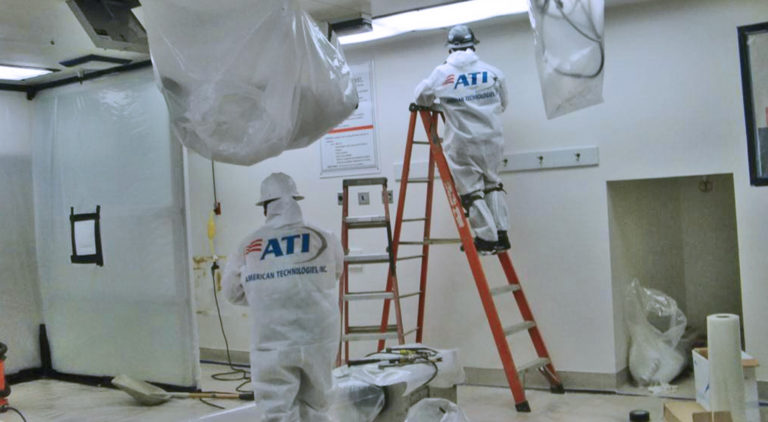While remaining open for high-risk patient care, an eight-story, 54,000 square foot hospital with 350 beds scheduled a voluntary, year-long seismic structural upgrade, requiring interior demolition, lead and asbestos abatement and removal, fire-stop sealing, and support for the General Contractor with seismic improvement.
ATI successfully met deadlines and stayed within budget, using Infection Control Risk Assessment enclosures and barriers to protect health for patients, hospital staff, and workers, featuring daily inspections and particle counts in patient-care areas, maintaining industry codes and standards across all work.
The Situation
When an eight-story, 350-bed hospital in Van Nuys, CA scheduled a voluntary seismic structural upgrade while keeping its doors open, it chose ATI to play an essential role.
The Solution
During the massive yearlong project, ATI performed selective interior demolition and environmental abatement, containment and fire-stopping services. ATI crews removed both nonhazardous and hazardous walls, ceilings and floors throughout the 54,000-square-foot main building; abated hazardous materials in walls, ceilings and floors containing asbestos; and removed surfaces with lead-based paint to support the General Contractor and all sub trades with the seismic improvement in “high-risk” patient care environments.

Infection Control Risk Assessment enclosures were erected to protect patients, health care workers and trade workers from hazardous airborne particles. As part of ATI’s quality control/quality assurance program, we inspected the temporary construction barriers daily to ensure their integrity from dust; monitored and documented ambient particle counts in occupied patient-care settings; and “fire-stop” sealed mechanical, electrical and plumbing penetrations along floors and walls of the affected areas complying with industry codes and standards.
ATI worked around the hospital’s high-demand operational hours and minimized patient-care disruption. ATI completed the environmentally sensitive tasks concurrently in areas throughout the hospital to meet the general contractor’s deadlines and within the project’s budget.